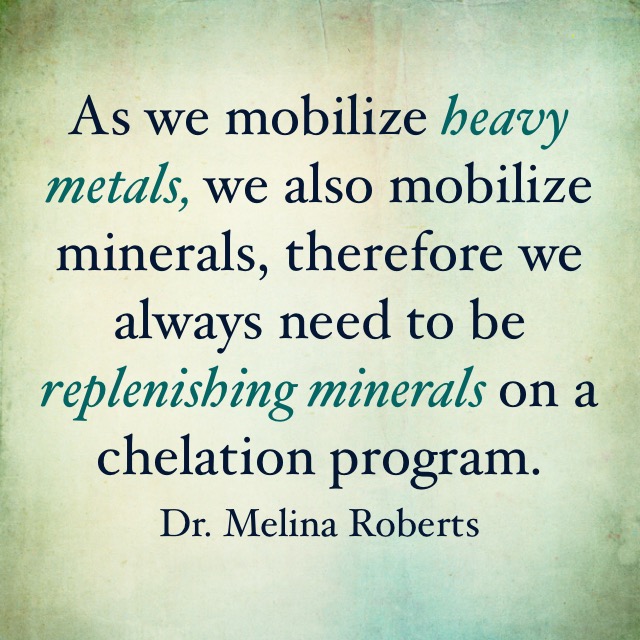Depending on the results of the provoked urine analysis, the amount of metals detected, which metals were high and how well the kidneys were functioning, a practitioner, that is properly trained in chelation therapy, will design a program for that individual, as certain chelating agents have better affinity for certain metals than others.
Each chelating agent has a certain affinity for the different toxic metals: calcium disodium EDTA is best to pull out lead and aluminum, DMPS had the highest affinity for mercury, and DMSA is the best broad-spectrum chelator.
There are risks involved with chelation. If we mobilize heavy metals too rapidly and the heavy metals are not able to move out of the body quickly enough we can make patients feel worse. As we mobilize heavy metals, we also mobilize minerals, therefore we always need to be replenishing minerals on a chelation program. Chelating is challenging on the kidneys, as most of the metals move out of through the kidneys, therefore it is important to always support and protect the kidneys through any chelation program.
I recommend that you work with a practitioner that is licensed and properly trained to administer chelation therapy safely and effectively.



